To the south-west of Glasgow city centre is a large green spot on the map: Pollock House and its park. A destination for nature and art lovers.
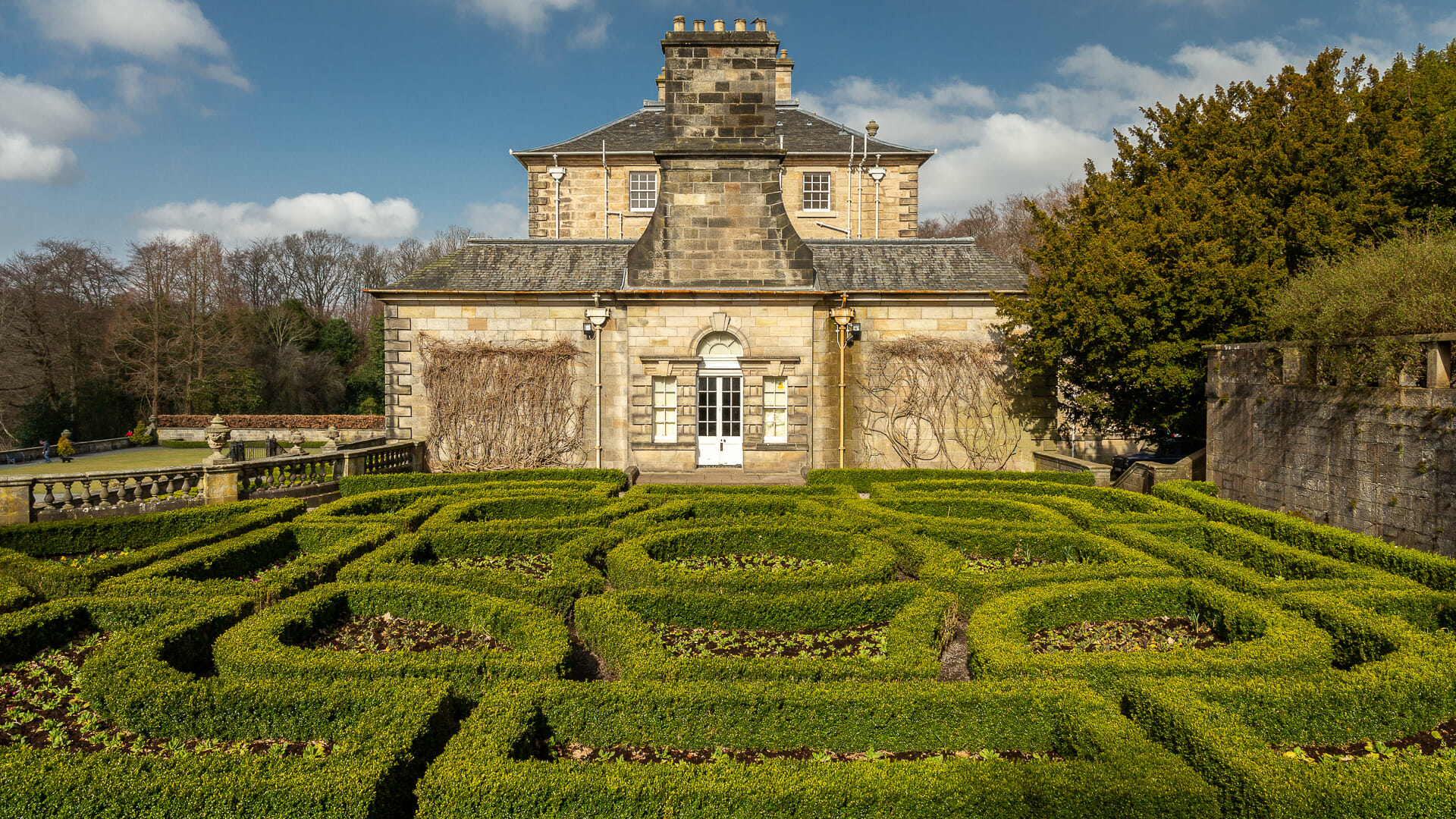
ATTENTION: Pollock House and its café will be closed for renovation from spring 2024 until around 2026.
It takes just ten minutes by taxi from the River Clyde in Glasgow to the large parkland of Pollock House. As soon as it turns off the main road, the city’s apartment blocks and large streets are forgotten and meadows and woods take their place. A huge green oasis on the outskirts of Scotland’s largest city.
But the varied landscape of the huge park is not the only highlight. Pollock House sits enthroned in the centre, surrounded by a well-tended garden and situated on an idyllic little river.
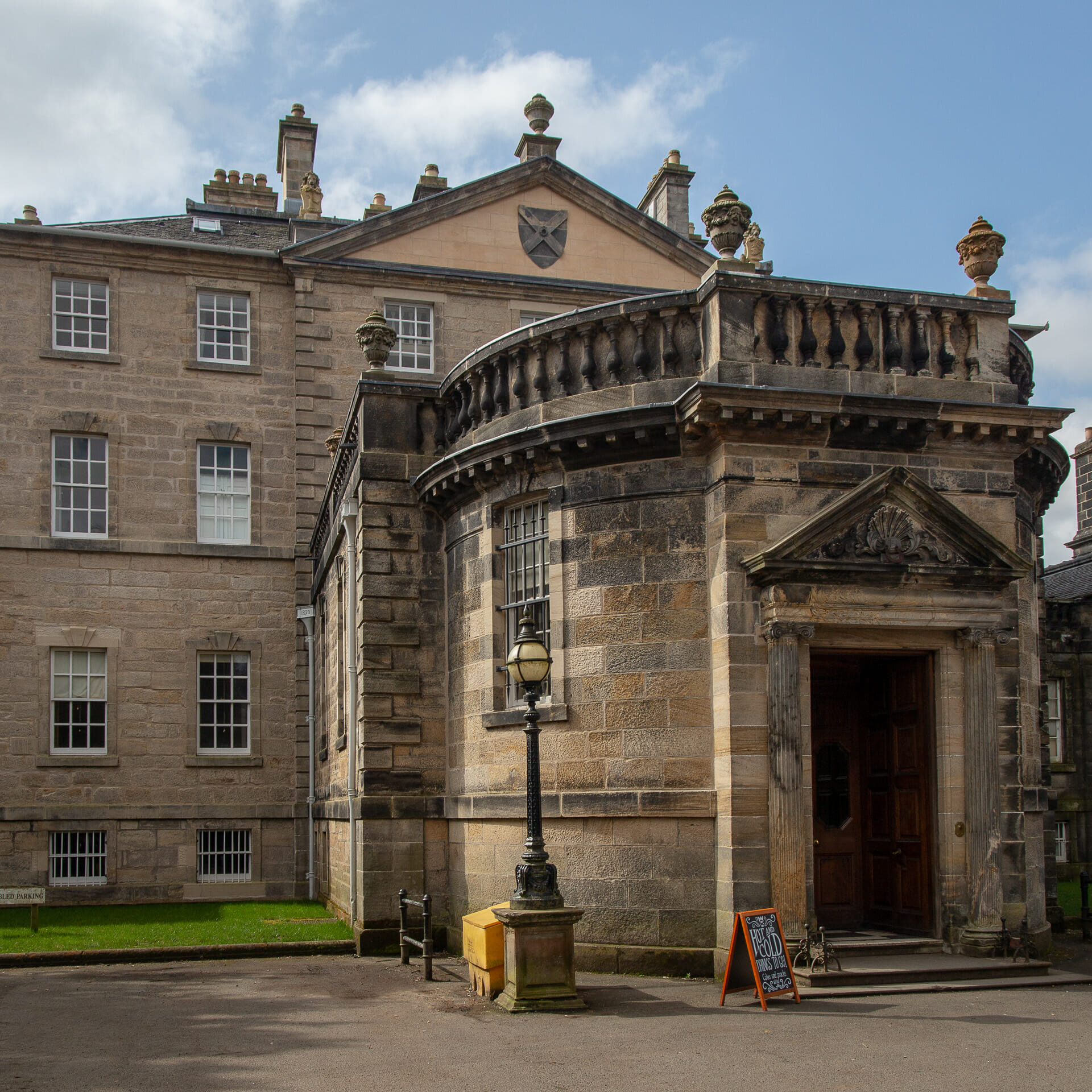
Visitors arriving at the house from the street may see an impressive portal at the main entrance, but the real beauty lies to the side and behind it, where the house reveals its full splendour. For example, in the form of the symmetrically laid out gardens, which offer a slightly elevated view of the parkland.
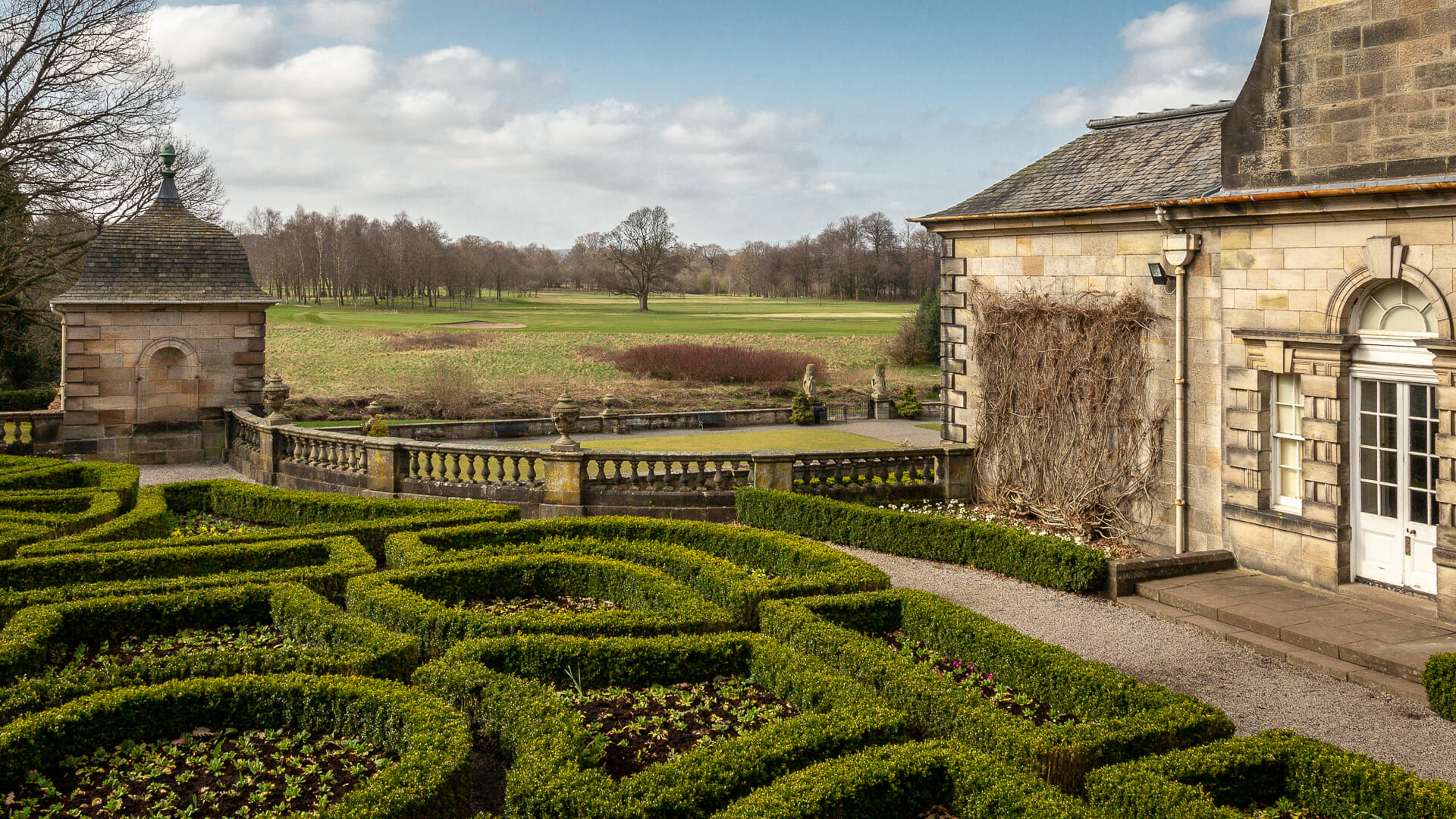
Finally, as visitors walk round the house and down to the park outside the small wall of the house, they see the majestic rear of Pollock House in all its beauty.
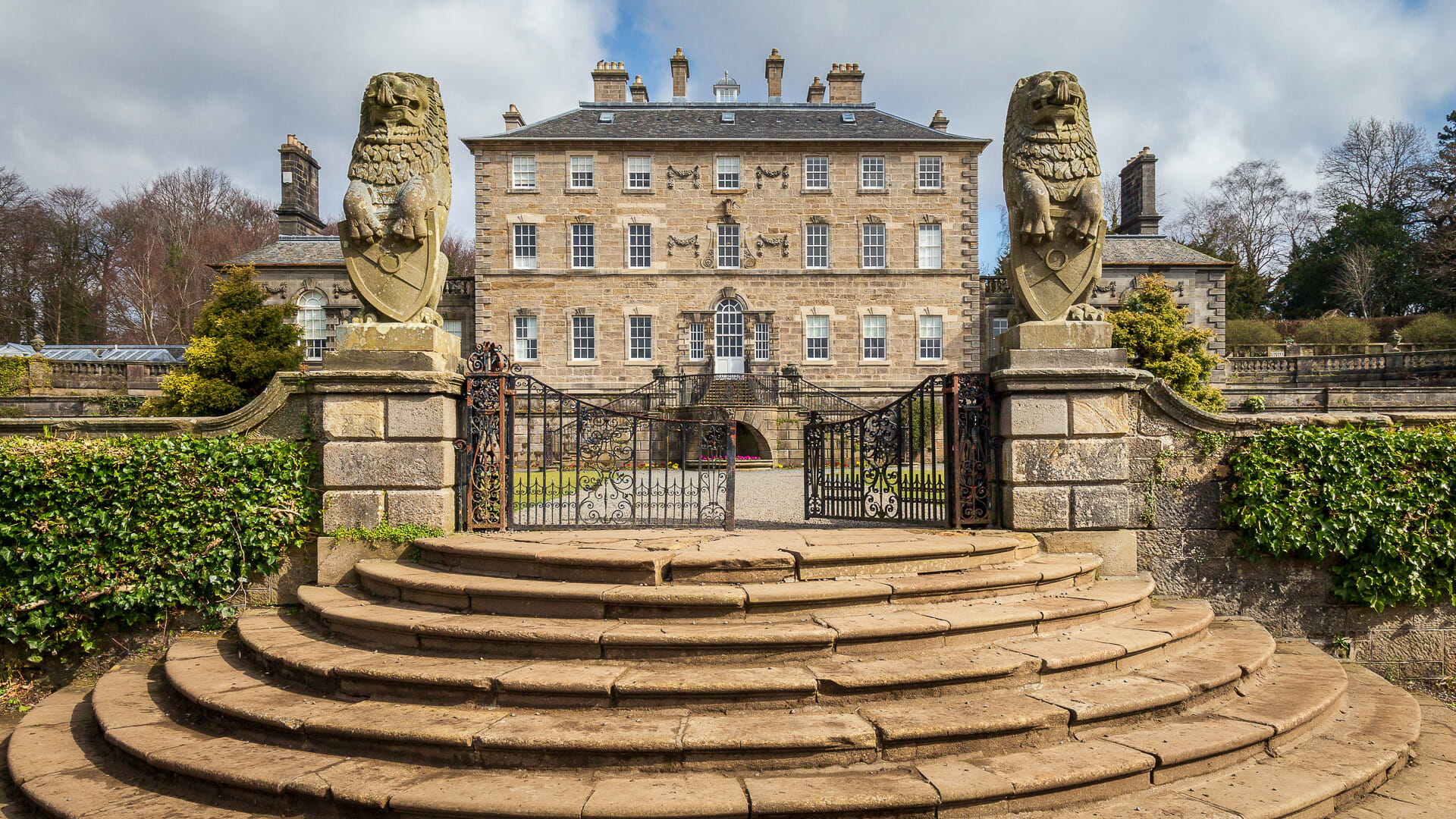
In good weather, you could spend hours in the garden and park alone – without having to pay admission. That changes when you go inside the house. The National Trust of Scotland needs money to maintain it, so it charges an entrance fee. Is it worth it?
Definitely, if you like grand old-style interiors. This is clear from the entrance hall, which is a marble and mahogany dream, complete with busts, Chinese vases and paintings.
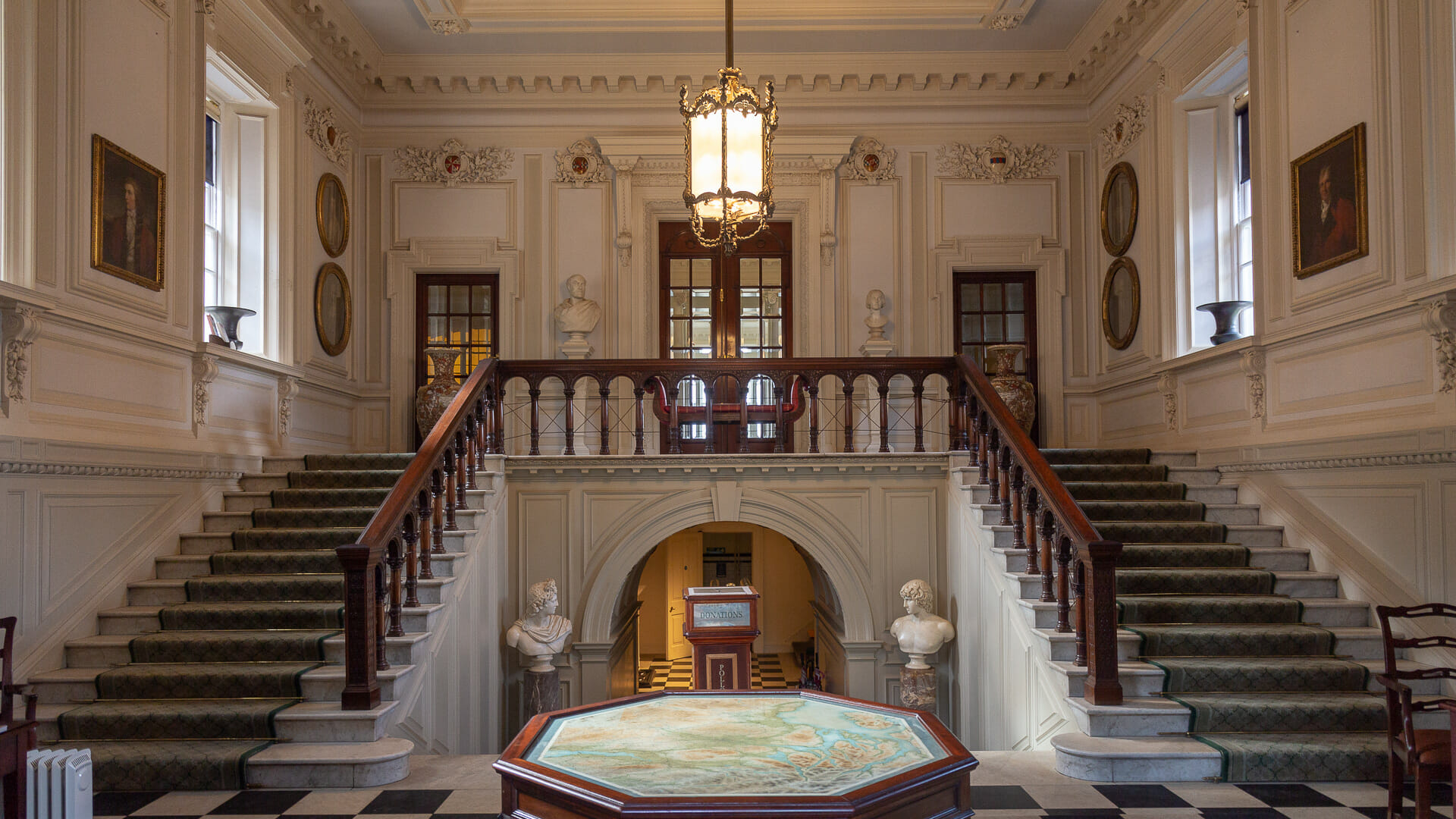
And a visit is particularly worthwhile for fans of painting. As soon as you have climbed one of the two staircases and walked through the door, you are greeted by works by the Spanish masters. Sir William Maxwell, one of the owners of the house, gained a reputation as a connoisseur and collector in the mid-19th century. Portraits of the Habsburg kings of Spain and works by Goya and El Greco (which I have deliberately not photographed) now hang in the corridors.
Visitors should definitely take a look at the astronomical grandfather clock in the corridor. It dates back to 1746 and belonged to the first owner of the house.
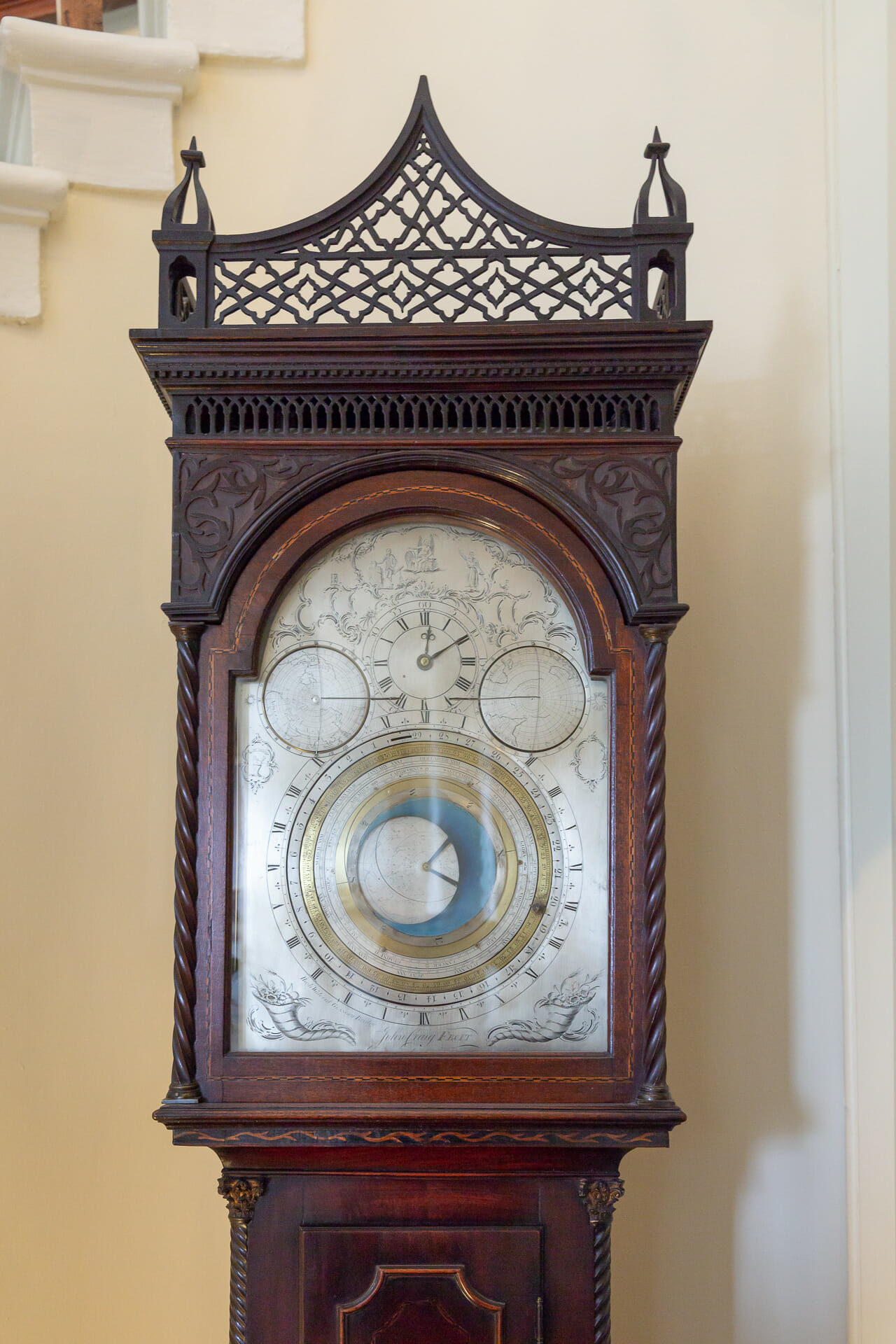
In addition to the time, the clock also shows the position of the sun and the phases of the moon, as well as the water level at high and low tide. The rooms on the ground floor can be explored from the corridor.
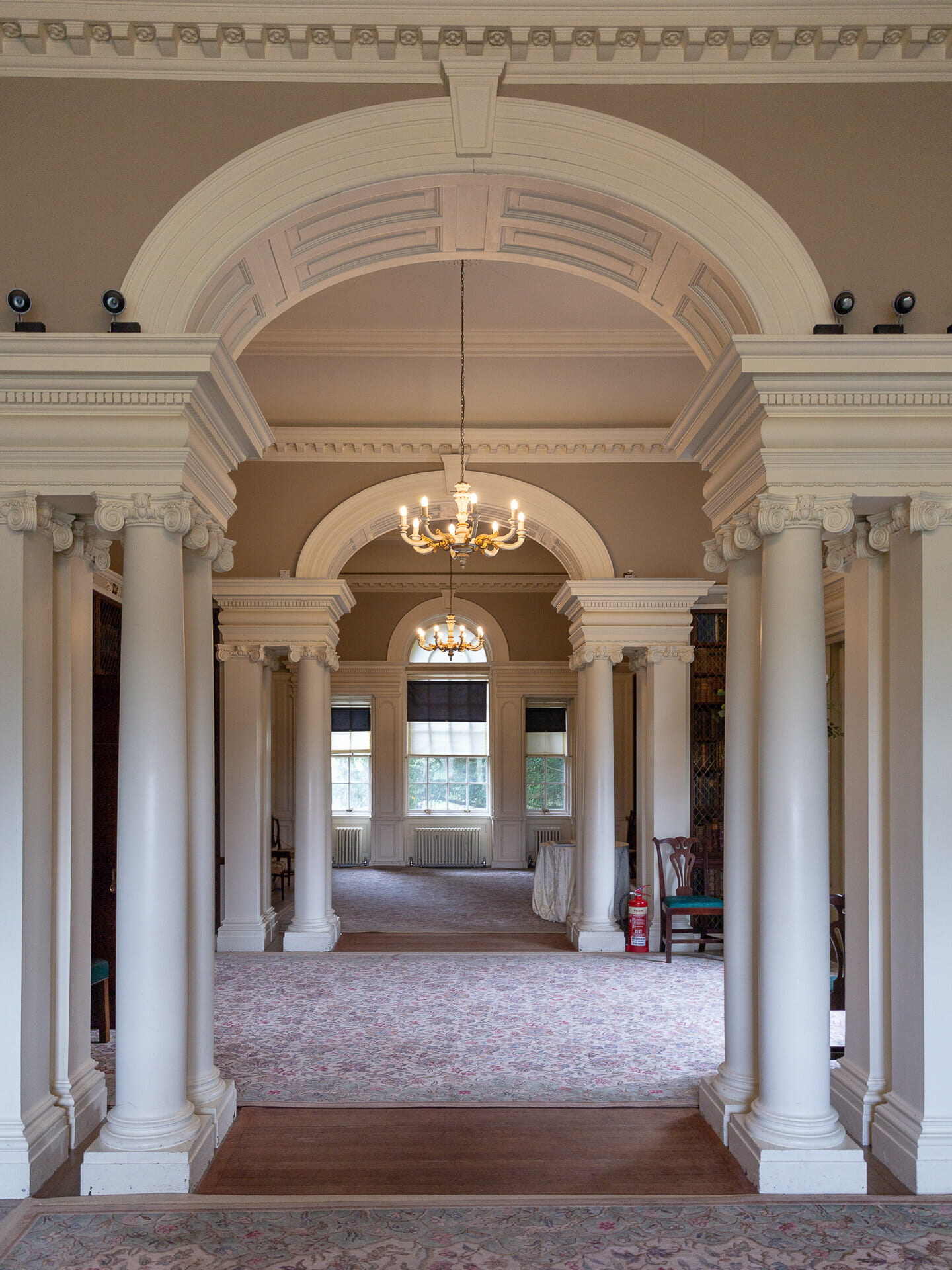
Each room has its own function, such as the Dining Room …
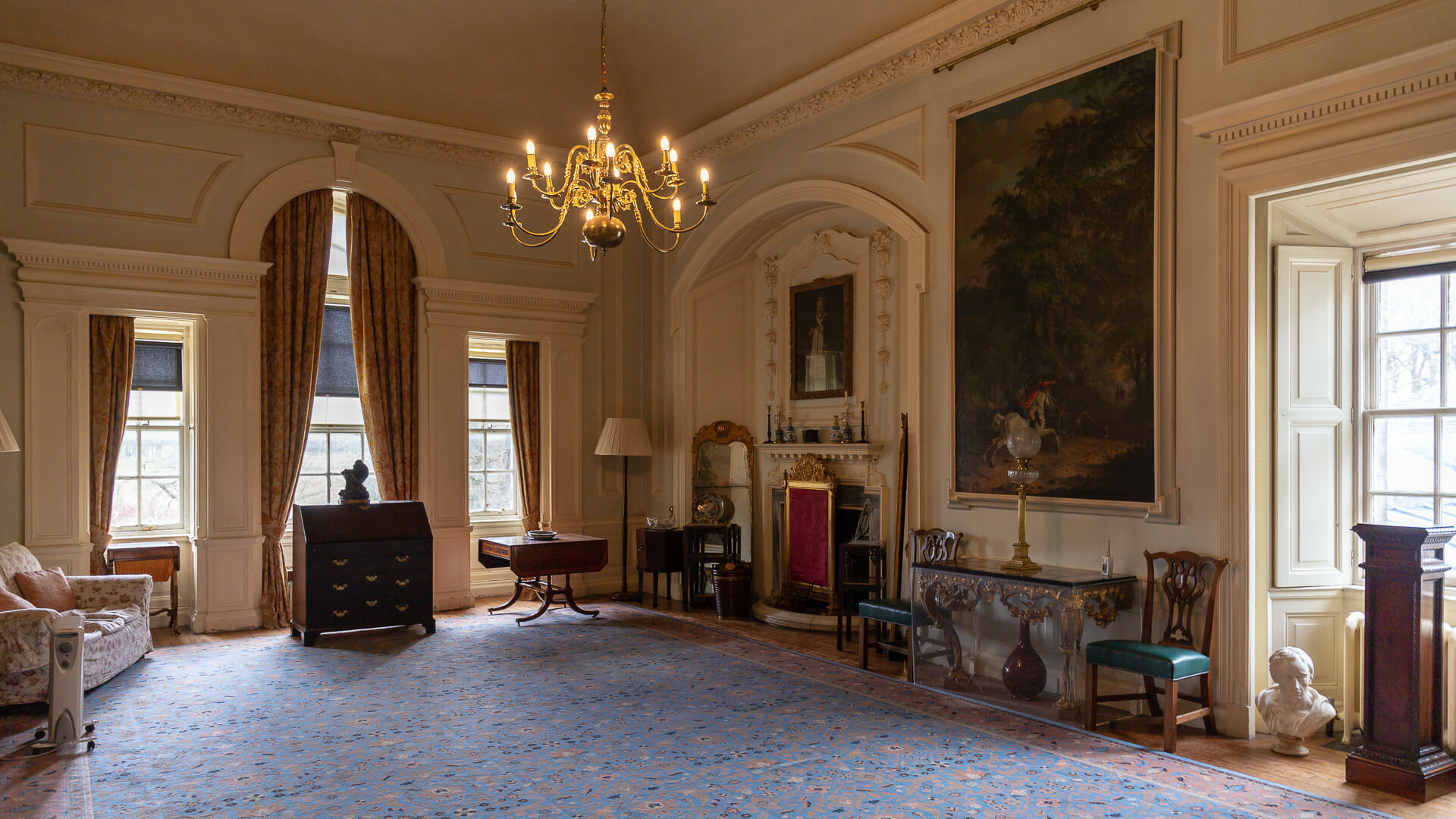
… or the Cedar Room, which functioned as a smoking room – the cedar wood was intended to combat the smell of smoke with its odour.
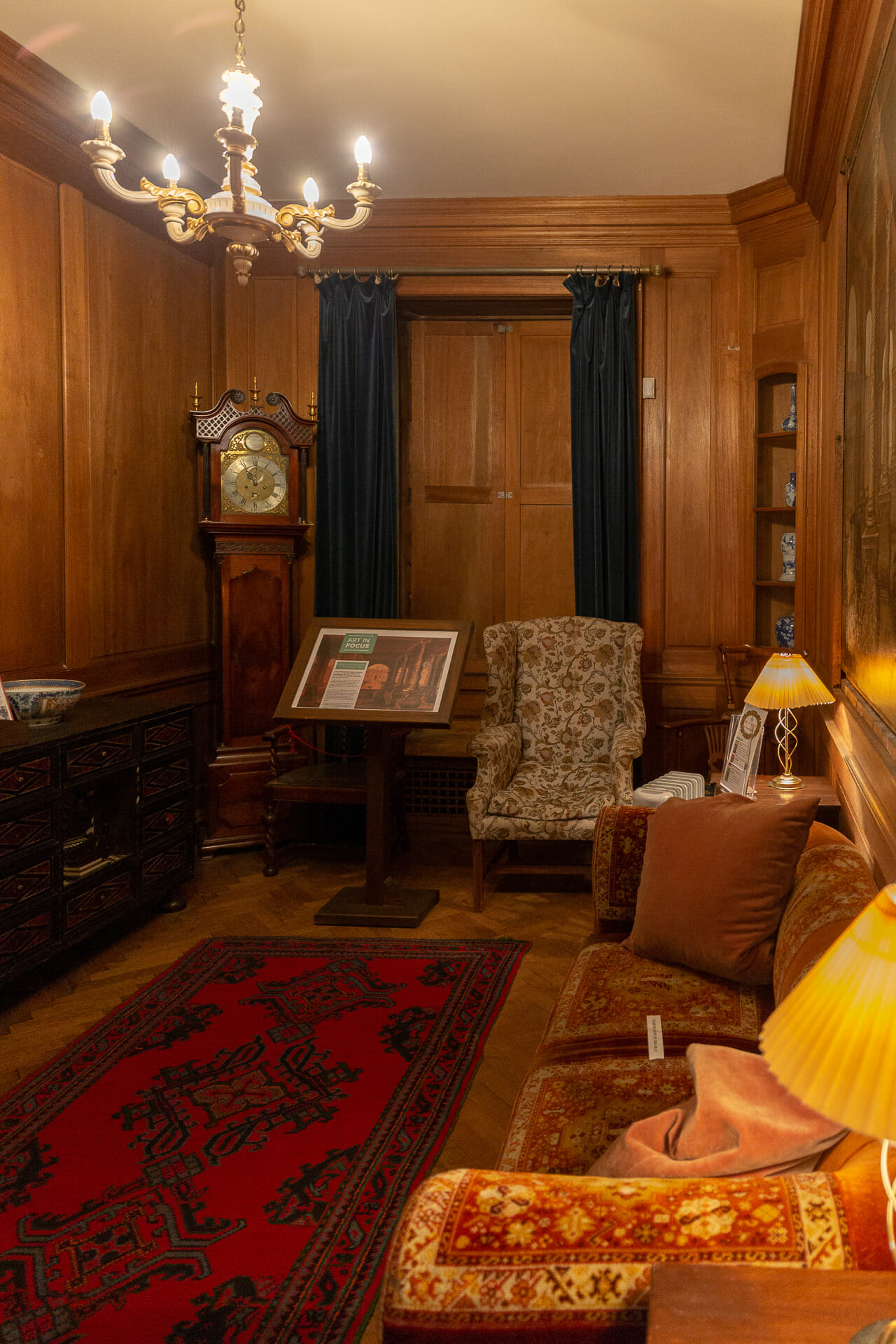
The Cedar Room has a very special story to tell. For it was within its walls that Sir Iain Colquhoun of Luss, the Duke of Atholl, the Earl of Crawford and Balcress and Sir John Stirling Maxwell first seriously discussed the idea of setting up a National Trust for Scotland – a foundation to look after the preservation of old buildings – in the early 1930s.
Obviously a success, as Pollock House is now run and maintained by the very trust that was conceived back then.
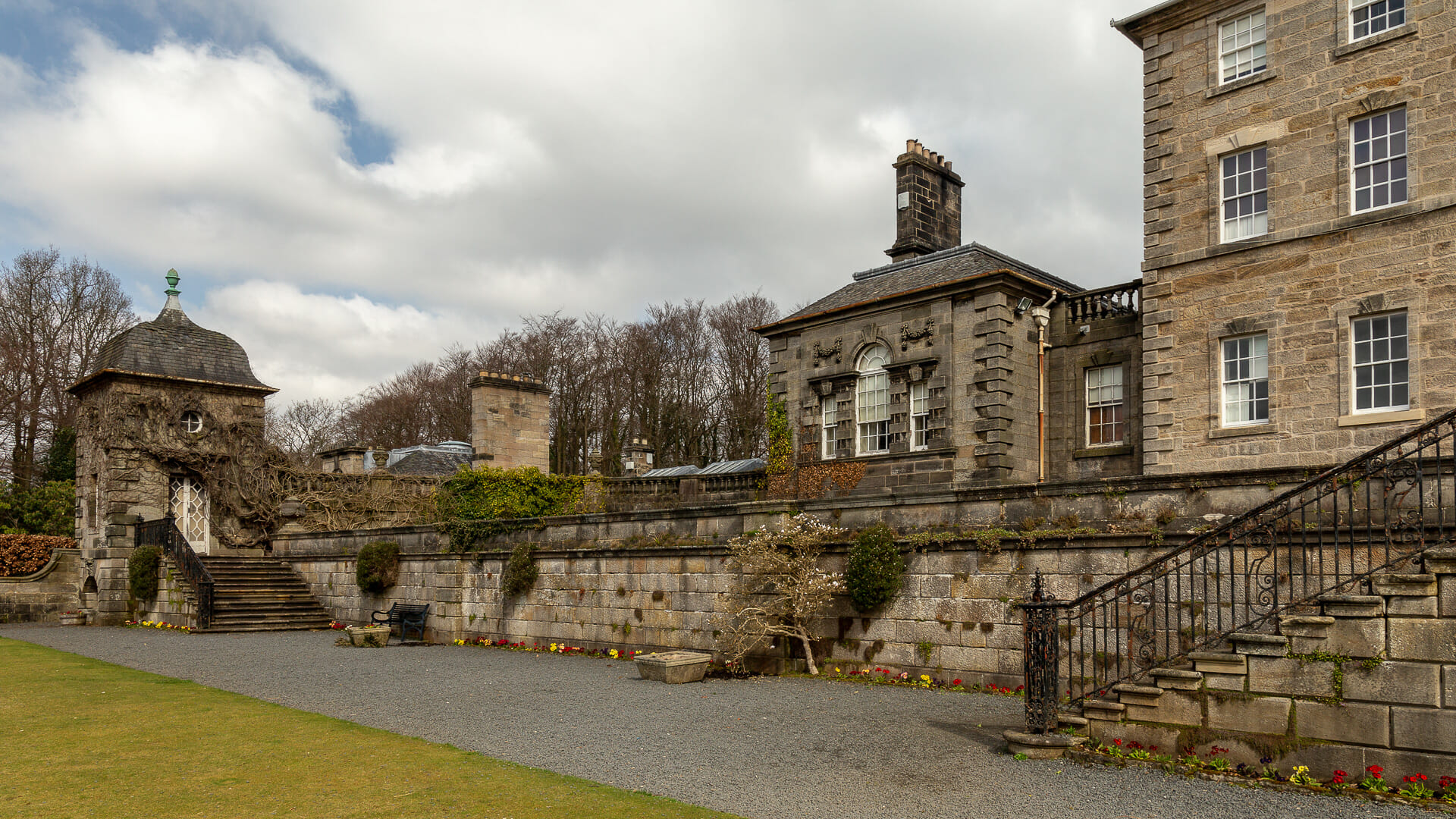
So it’s no wonder that the National Trust looks after and maintains this treasure on the outskirts of Glasgow. However, precisely because Glasgow is not the top destination in Scotland and the outskirts of this city are twice as unlikely, Pollock House is not an overcrowded tourist attraction, but (still) a real insider tip for visitors.
What you need to know: History of Pollock House
A family name is inextricably linked to the land around Pollock House. It is said that this name comes from a Saxon called Maccus, who fled from the Normans to Scotland and settled at a spring – Maccus’ Well became Maxwell. In the 13th century, his great-grandson Sir John Maxwell was first mentioned as living in Pollock.
The term “Pollock” probably derives from the Gaelic “pollag” meaning “small pond”. However, the lands the Maxwells held here were far more than the banks of a small pond.
Over the centuries, the Maxwells passed the area on to their children, as did the first name John, which was given to the eldest son (yes, a rule that applied almost universally). So it is no wonder that it was the nobleman John Maxwell who had Pollock House built by 1752. His son John then had the stone bridge built over the river to reach the road to Paisley.
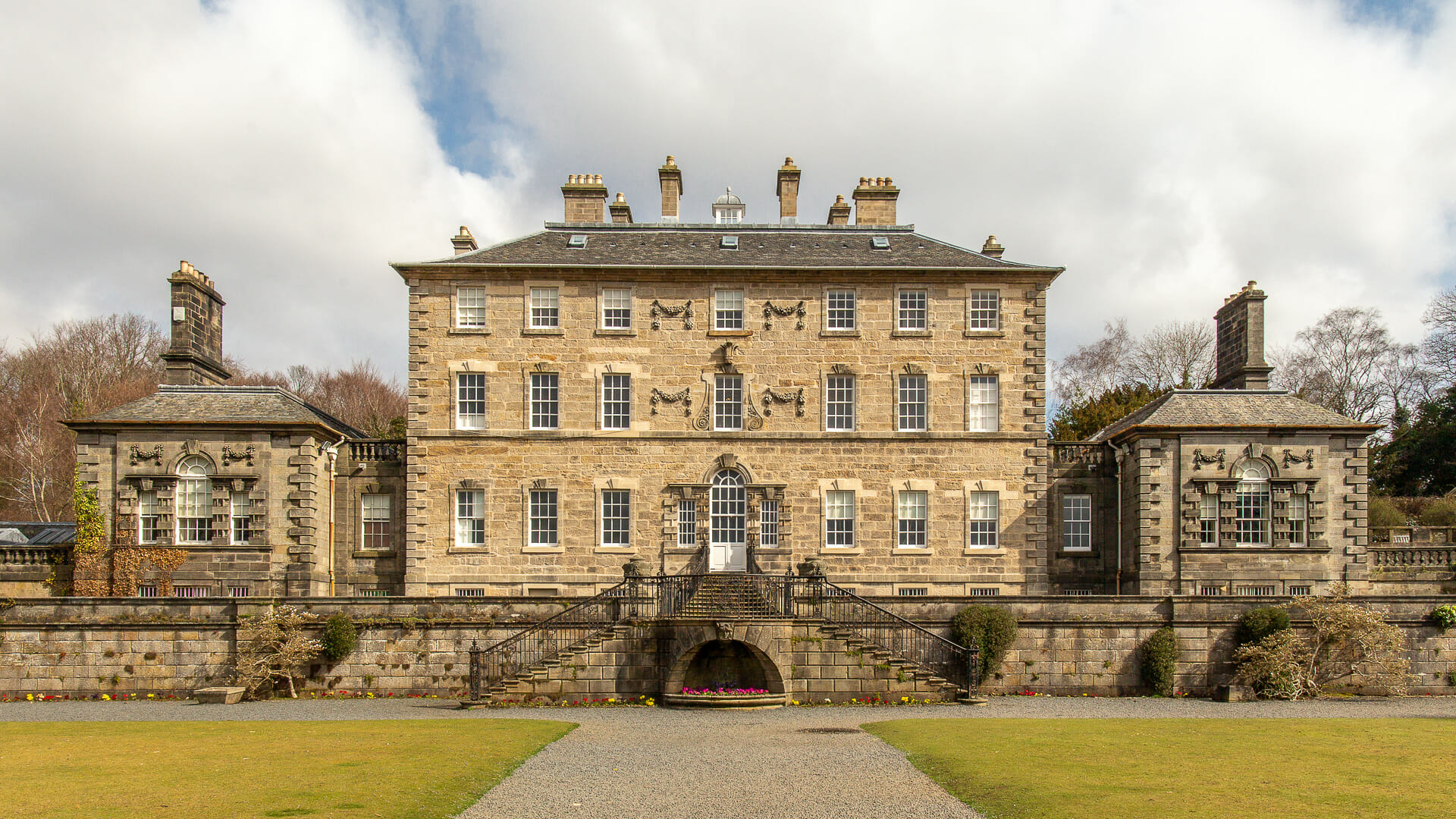
In the middle of the 19th century, Sir William Maxwell took over the house (“William” was the exception that proved the rule). He travelled around the Mediterranean, where he discovered his interest in Spanish art. Not only did he write treatises on the subject, he also collected Spanish masterpieces and laid the foundations of today’s collection.
His son John Maxwell (there really were few exceptions to the rule …) benefited from the fact that Glasgow’s borders now extended to his lands. The value of the estate increased. Sir John died in 1956 at the age of 90, his widow eventually bequeathed Pollock House and the collection to Glasgow City Council, which handed over the management to the National Trust of Scotland, which Sir John had once helped to found.
Tip: Visit the Burell Collection
Another attraction is just a ten-minute walk away. The Burell Collection displays medieval weapons and armour, Chinese porcelain, tapestries and paintings by artists such as Manet, Cézanne and Degas. The collection comprises a total of 9,000 exhibits. However, the exhibition is closed until 2020 as it is being completely renovated, so there are no paintings here. the Burell Collection will reopen its doors to visitors in 2020.
Film set: Outlander film location
A park with so many facets of manicured meadows with avenues and wild woodlands close to a large city is ideal for film sets. And so the “Outlander” series is a regular guest at Pollock Park. Nature usually provides other locations. French landscapes, for example.
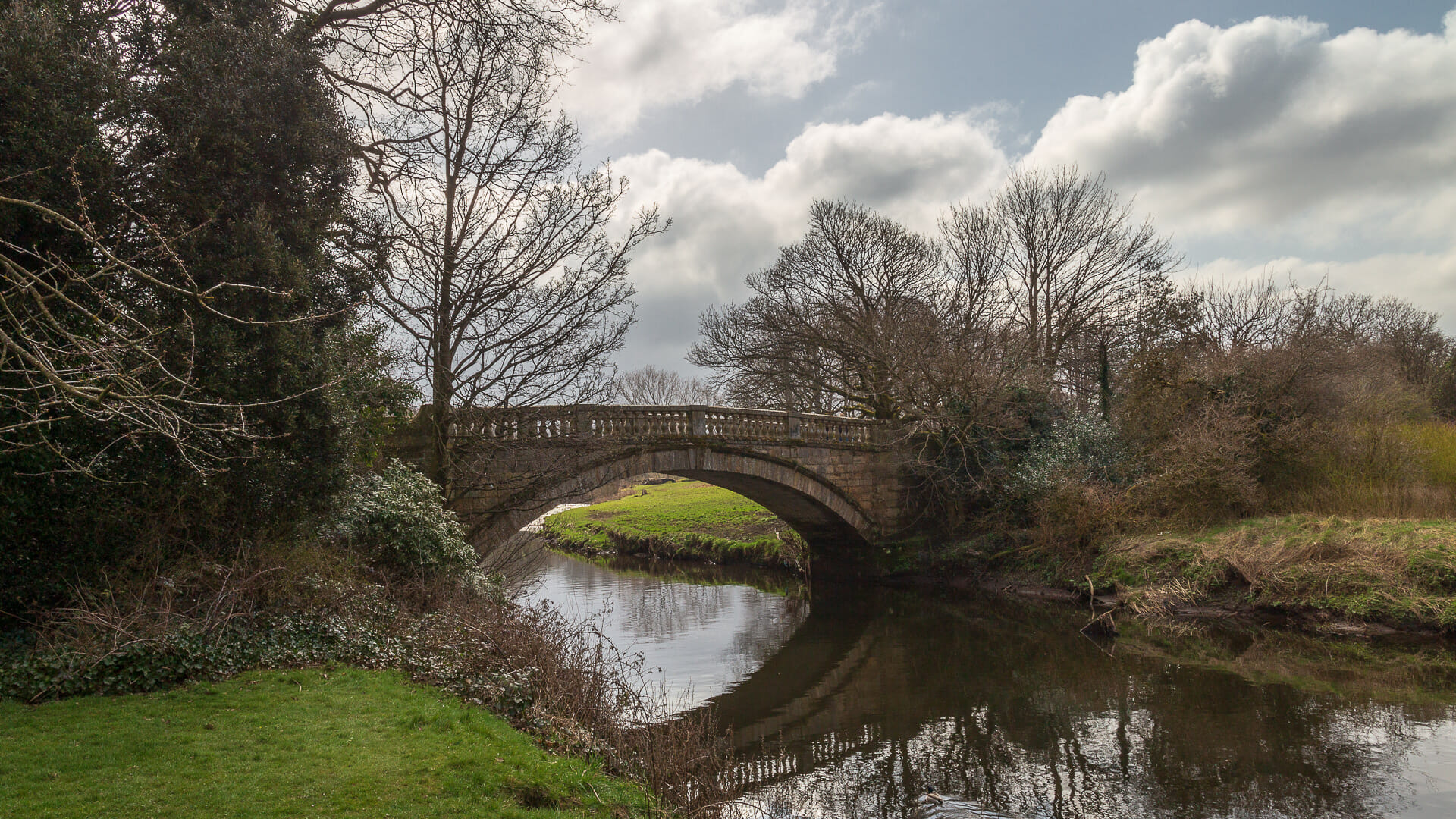
The surroundings of Pollock House can best be recognised in the episode “Best Laid Schemes” in season 2, episode 6. From around minute 45, Claire tries to prevent the duel between Black Jack Randall and Jamie. She sits in a carriage that drives over a bridge, among other things.
The walls around which the carriage curves are also part of the Pollock House area. And finally, the body of Faith Frazer from episode 7 in season 2 lies on the small plateau above the garden, which can be seen in the first picture of the post.
Directions:
With satnav: “G41 4SN” will take you close to the north entrance to the park on Dumbreck Road.
Without satnav: In Glasgow, take the motorway towards Greenock, but then continue on the M77 to Kilmarnock. Take the “P’ shields/Mosspark” exit. Keep left at the bottom to Pollockshaws. Immediately get back into the right-hand lane and turn off. A sign welcomes you to Pollock Country Park. Continue along the road for a few minutes until you reach the house.
Public transport: The park itself on the outskirts of the city is not difficult to reach. The train takes around ten minutes from Glasgow Central Station in the direction of Barrhead to the destination station Pollokshaw West. The fare is around £2.50. From Pollokshaw West, it’s a few steps to the park entrance and then about 20 minutes on foot to the house.